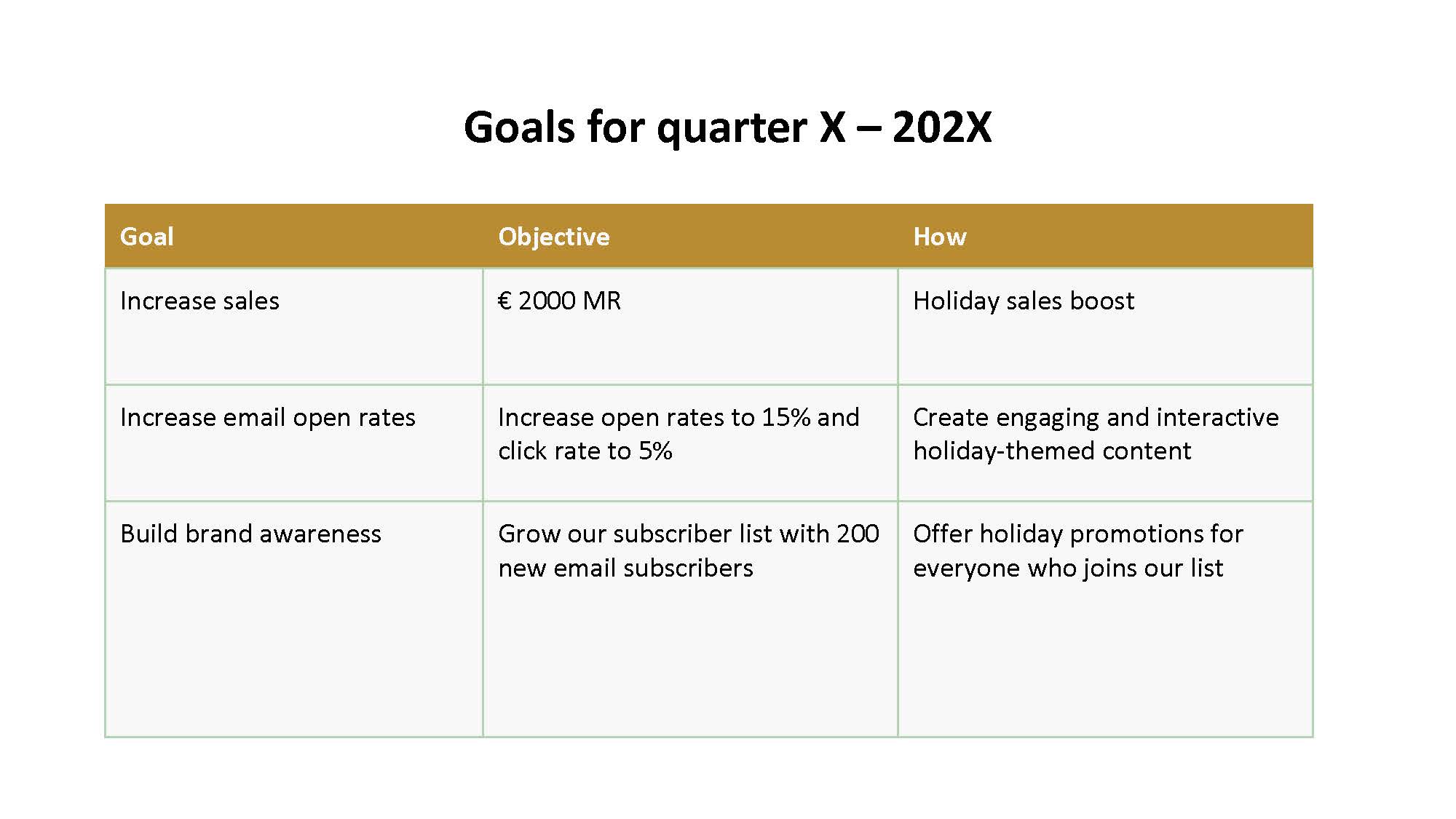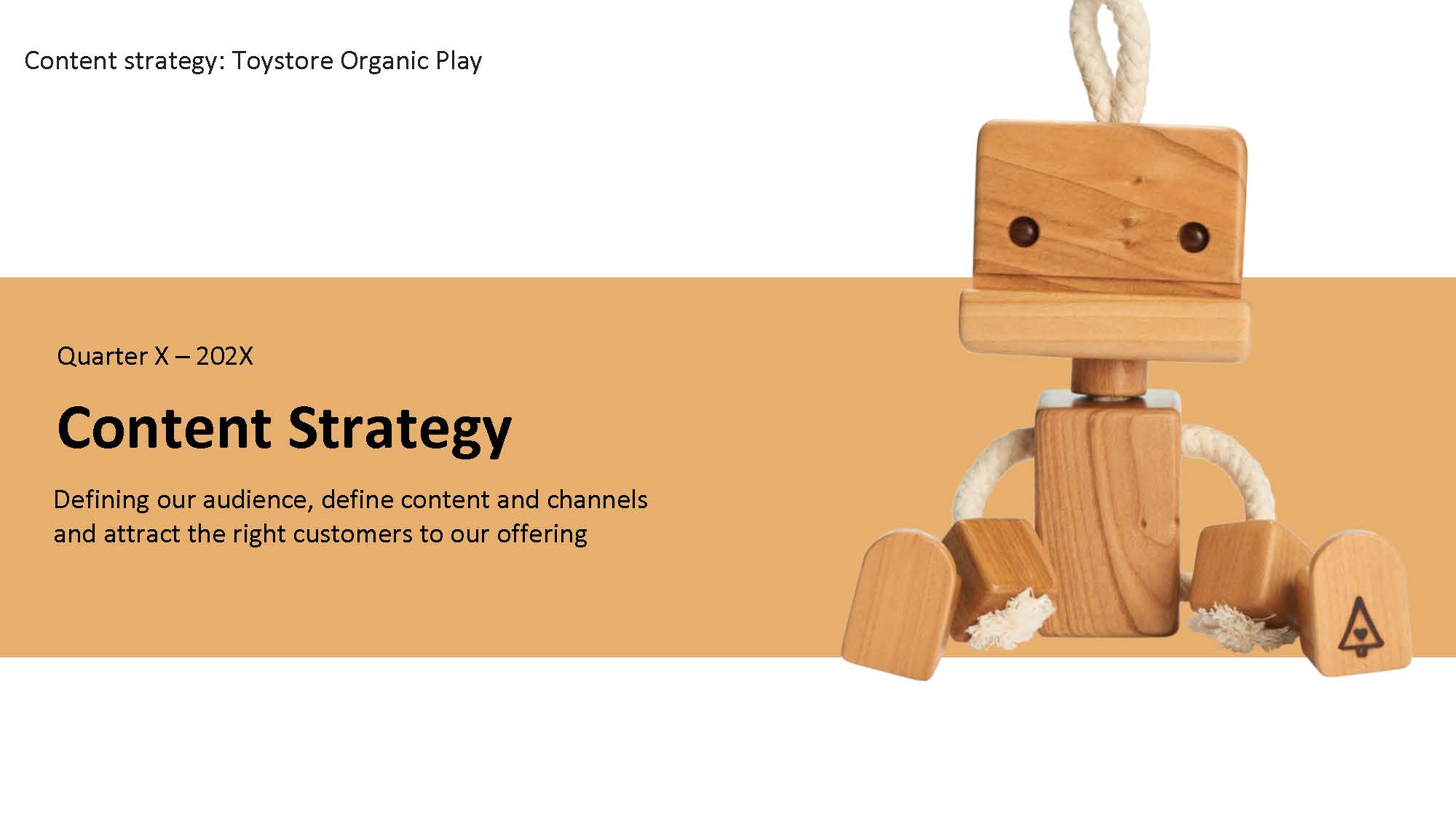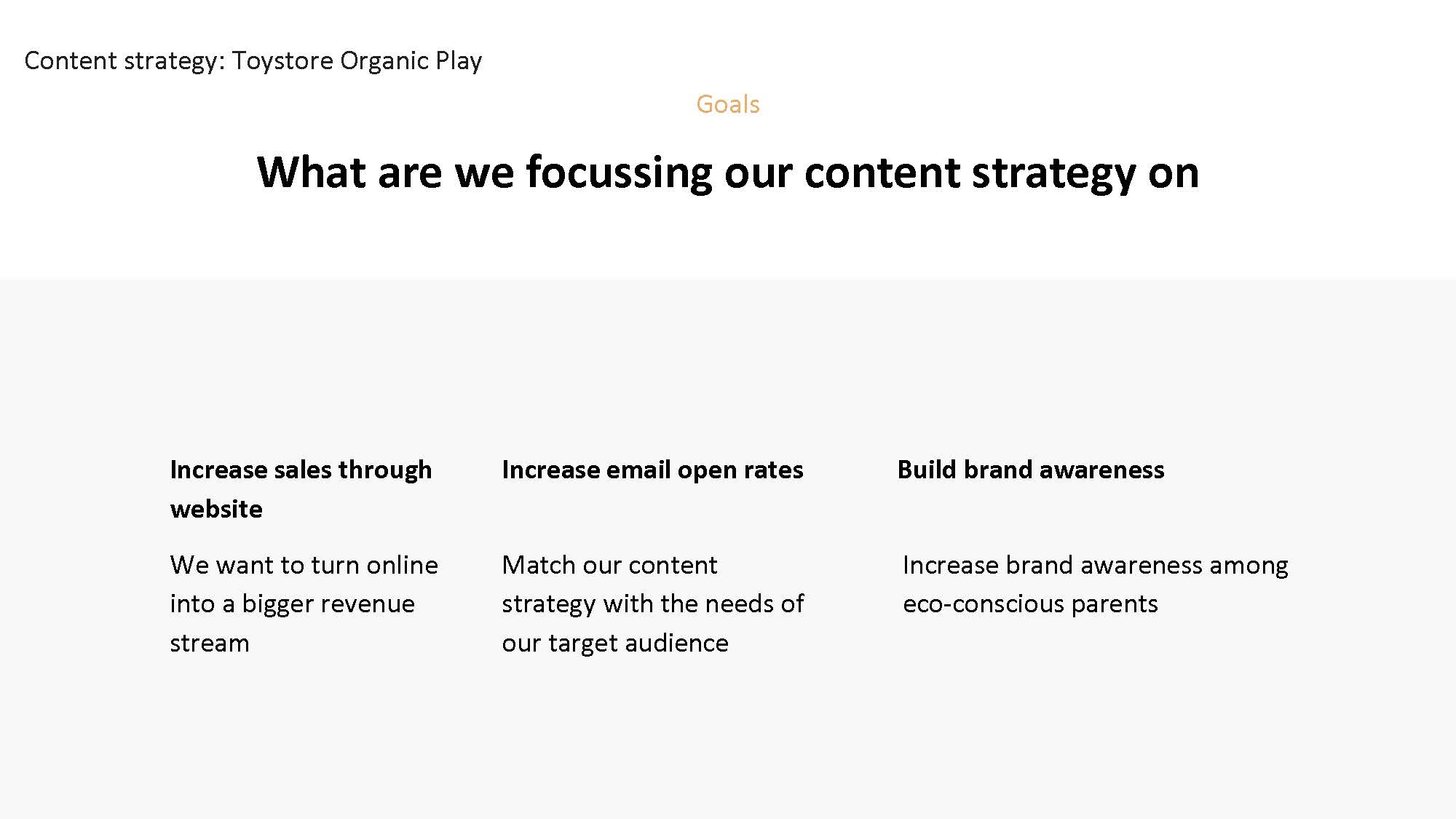Why do you need an e-mail marketing content strategy?
There are still too many businesses that send out a newsletter in panic every month with content gathered haphazardly. To make your e-mails really successful, you need a wider plan. You have to think in advance about what your target group needs most at any given moment, and about how to guide them to your website at crucial moments.With a content strategy, you know in advance which themes you want to discuss; you will know exactly what to write about.
Viewing copy
Setting up an e-mail marketing content strategy a step at a time
Step 1: Objects
By starting from your objects, you can also use your content to work towards an object, after which you can also measure whether your campaigns are successful.If you adjust this regularly throughout the year, your objectives will become tangible and realistic, since you can split them into blocks. In our template, we start with annual objects. Per quarter, we divide these annual objects into concrete objectives for the respective quarter.
Step 2: Research
We start with your target group. Who are your ideal customers, and into which target groups can you divide them? How did they find you, and why? What do they need? What are they struggling with? How do they stand out from other target groups?In a next step, we will look into your target groups more closely. Which data do you need about your target group to split them into segments? In other words, how can you find them in your customer database? How can you add new contacts to your database in this target group? What kind of content would they be attracted to?
Once we have clearly distinguished your target groups, we will continue with the content you have already sent, because you can also learn from that. Which articles and which e-mails had better open rates or click rates? What were they about? What kind of subject line and template did you use for them? Which e-mails had slightly lower scores? Did you send them in a bad period, or was the content not good enough? Write down your conclusions. op.
Step 3: Content strategy
We are now going to convert our objects and conclusions into a content positioning. How will you be standing out from your competitors? What value will your readers get from your content?Are you going to focus on tips and content? Are you going to launch products and focus on new launches? Or will it be a combination of these? Here, we want to present an offer that is valuable for your readers, so that they can link these values to your brand.
If you have little time, you should choose one focal point. If you want to communicate on a regular basis, however, there could be three to five focal points. You can even consider leaving your recipients the choice of which ‘content pillars’ they want to subscribe to.
You can go a bit further for each quarter and figure out how you are going to present these pillars. Give some examples.
Step 4: Content plan
In the final section, we are going to be specific for your next quarter. Which themes will be of interest in the next few months, and what exactly do you want to convey? If you can do this for your own sector, try to choose an overarching theme per month. It provides clarity for your customers, and it allows you to focus your content on the respective theme.Next, we will develop the details of each theme into a content calendar. Our example was based on one e-mail per week, but of course you can increase or decrease the frequency. Determine specifically what you are going to discuss in each edition and which elements you need for this.
Finally, we are going to draw up a task list for every month and every piece of content.







